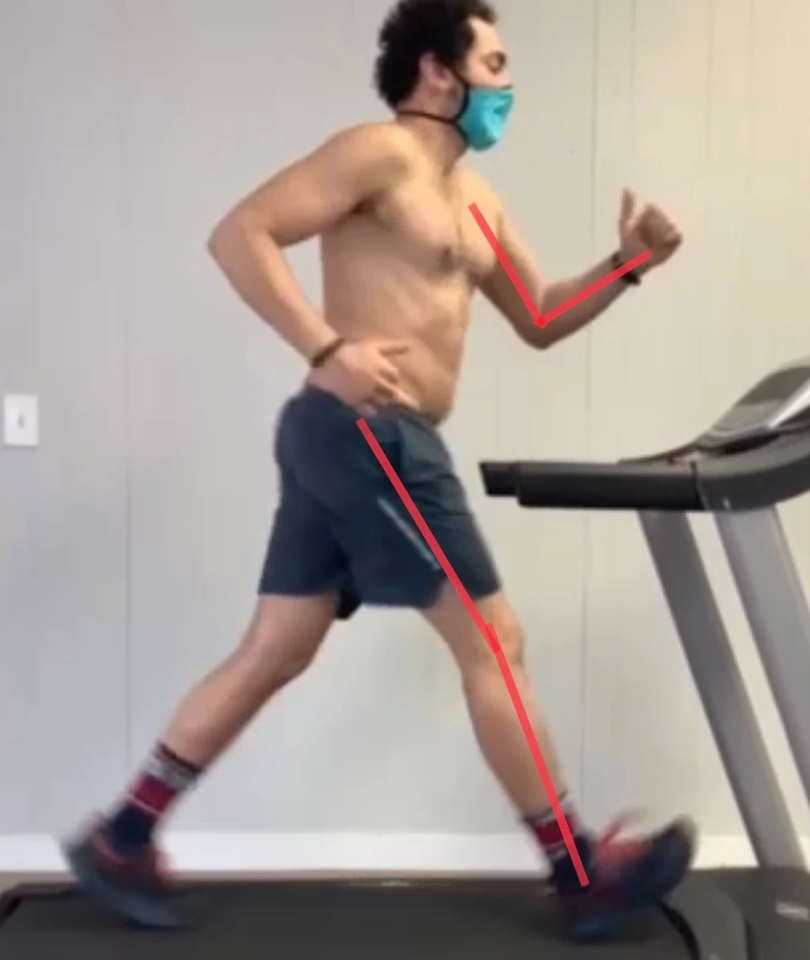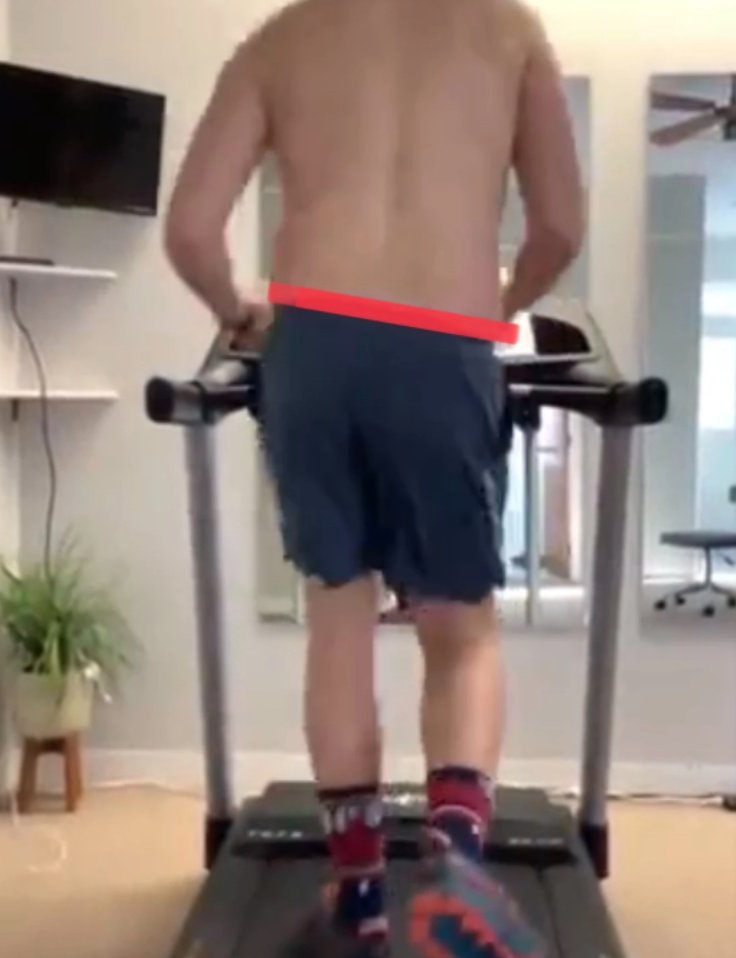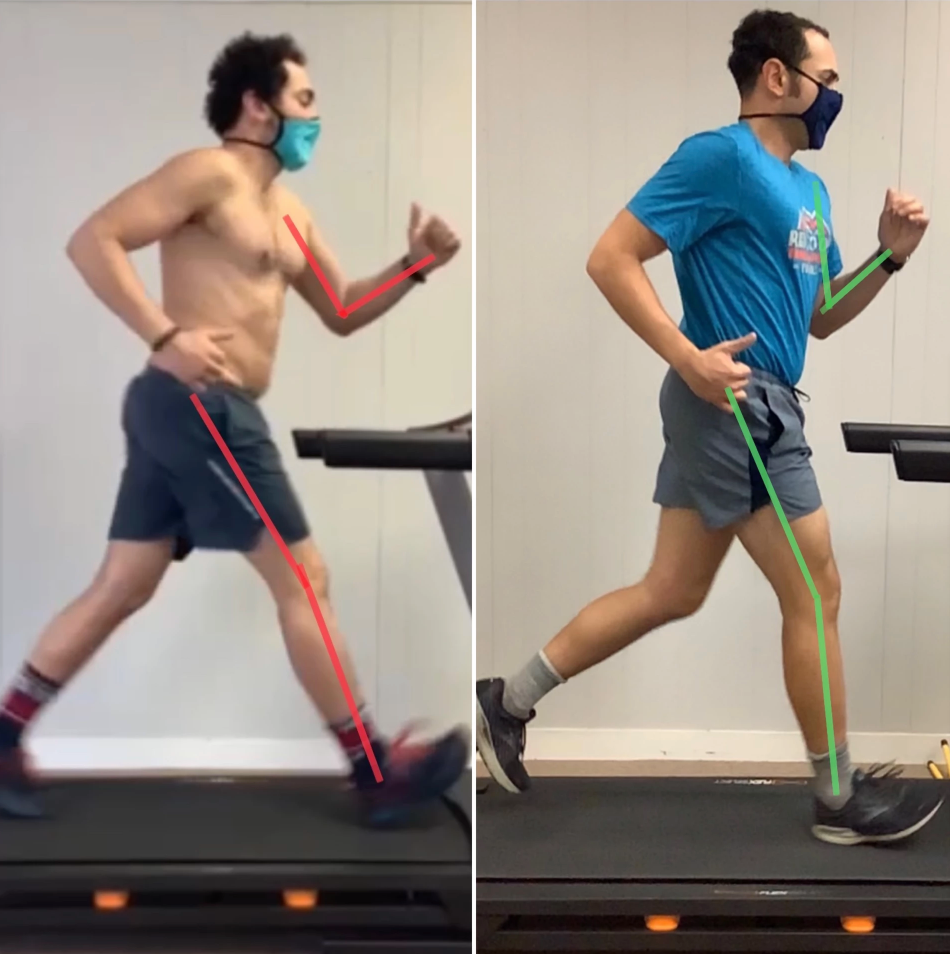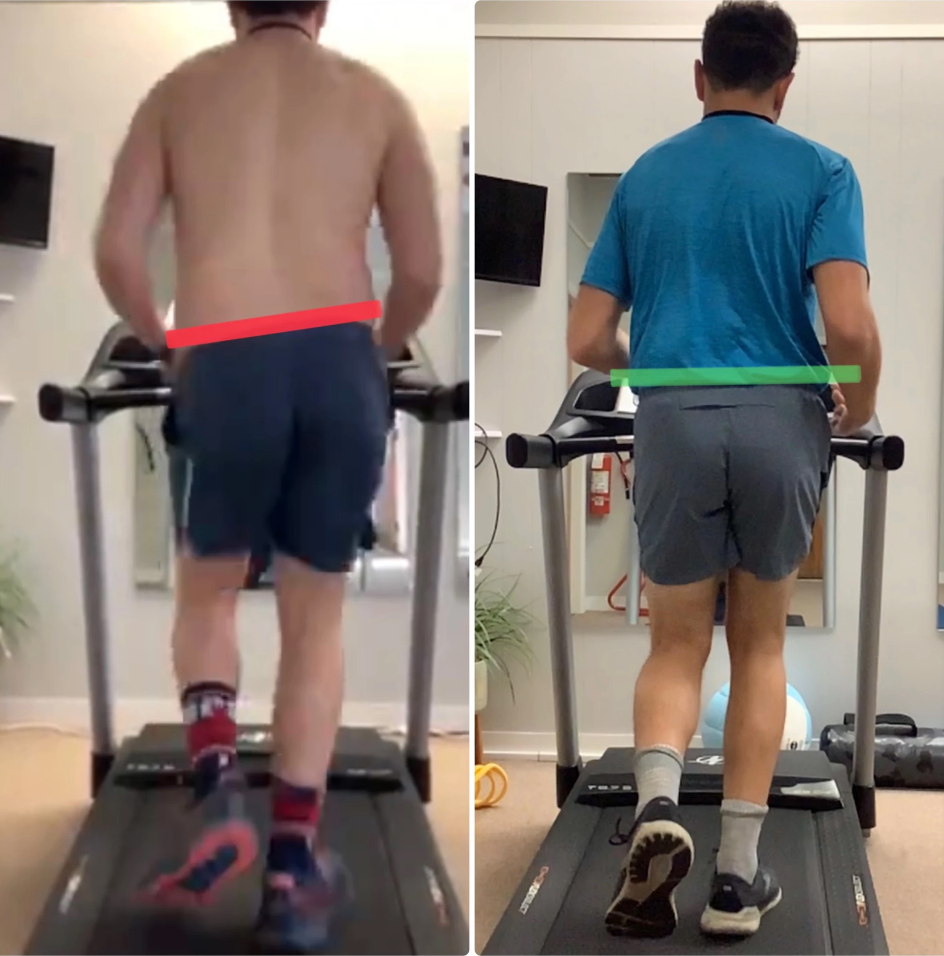Case Study: Gait Retraining for Running Performance
T H E R U N N E R
Jad came to The Run RX as a pain-free runner looking to improve his performance. He has made it his goal to run a ½ marathon AND climb the highest peak in every state in the US. He made initial improvements as a new runner by just running mileage with little structure but was reaching a plateau and began getting that inevitable bug to improve his PR.
His goal when he came to Run RX: run sub 2 hour half marathons and 4:30 full marathon.
T H E F I N D I N G S
Stride Length & Vertical Oscillation
Jad had a super long stride with very little flight time or vertical oscillation. While too much oscillation can lead to energy lost up and down, too little tells us the body isn't using it's natural springs (your joints) to absorb landing. Not using these springs meant he wasn't accessing all that stored elastic energy, thereby reducing running economy, speed and performance. A fully extended knee at foot strike, fights his ability to move fast by causing lots of braking forces and impact at landing, placing him at risk for future injury.
Pelvic Drop and Anterior Tilt
Most notably, the pelvic drop was due to significant weakness of his lateral hip (glute medius). This is a major risk factor for many running injuries if not corrected. As it relates to performance, it's hard to develop power when pushing off an unstable surface. Think of trying to jump off a house of cards vs a cement floor.
Toe Out and Midfoot Overpronation
Another movement pattern with heavy injury risk implications especially at the foot and ankle (Jad has had a fleeting issue with plantar fasciitis). Just like at the hips/pelvis, poor alignment at the foot and ankle causing collapse reduces the efficiency of push off.
Musculoskeletal Assessment
Significant lateral hip weakness causing pelvic drop
Reduced core control & psoas tightness causing anterior pelvic tilt
Calf and foot intrinsic weakness contributing to midfoot collapse
Ankle dorsiflexion restriction a likely contributor to toe out
Femoral anteversion a contributor to toe out - this is the alignment of the boney structure, something we can't change but want to know as we gait retrain
G A I T R E T R A I N I N G
Metronome → Jads cadence was in the 140's, we set our metronome in the 160's to encourage a faster turnover
Addressing arm swing → stride length/rate is largely driven by arm swing. A big forward arm swing was being mirrored by his legs. He also had a big elbow angle (> 90 deg) which increases the lever arm making it harder to turn over quickly.
Base of support → a big difference between walking and running fast is when running your feet strike on a line. We played around with this cue with good success, thinking of running on a line vs wide helped things feel more natural
Barefoot → we were not transitioning to minimalist but when he was having a hard time shortening his stride, we played around with it in small doses to encourage this and give him a feel for shorter stride
The right cue → the cue that worked best was to imagine he was running with a wall in front of him and to avoid hitting it by reaching with his foot or arm swing.
We also cued glute engagement and drawing ribs down slightly to add some stability and engagement around the pelvis. Cuing to point toes straight ahead and use mirror for feedback to help with toe out.
O F F - T R E A D M I L L
The Hardware
Lateral Hip Strength - side planks, leg lifts and single leg exercises galore as well as full hip girdle strengthening as we believed it played a role in his hip flexor tightness
Calf & Foot Intrinsic Strength - everything done barefoot and isolation of foot intrinsics to help with midfoot overpronation. Calf was notably weak which affect his plyometric ability and push off for performance
Single Leg Strength - Jad was doing a lot of HIIT style classes which was a lot of double leg strength. Running is one leg at a time so we needed to train him that wa
Ankle & Hip Mobility - to reduce tendency for toe out and anterior pelvic tilt
The Software
LOTS of Plyos - to train the explosiveness needed to confidently add that bounce and power. All form-focused to mimic what we wanted to accomplish running with emphasis on shock absorption through his hip and knee while maintaining a level pelvis.
Drills - fast feet and jumping emphasizing minimizing ground contact time. Drills encouraging forward trunk lean from the ankles with core engaged. Encouraged minimal toe out to the best of his ability while considering his structure.
Runs - we added more hill workouts to promote power and leg strength as well as encourage a good forward trunk lean
T H E R E S U L T S
Jad has been SO committed to the program we developed and has vastly improved how he runs. Most importantly, he has run his last 3 half marathons all sub 2 hours and had a personal PR at the CIM Marathon last weekend! Catch him bouncing all around the streets of Somerville (and the US!) Keep it up, Jad!






